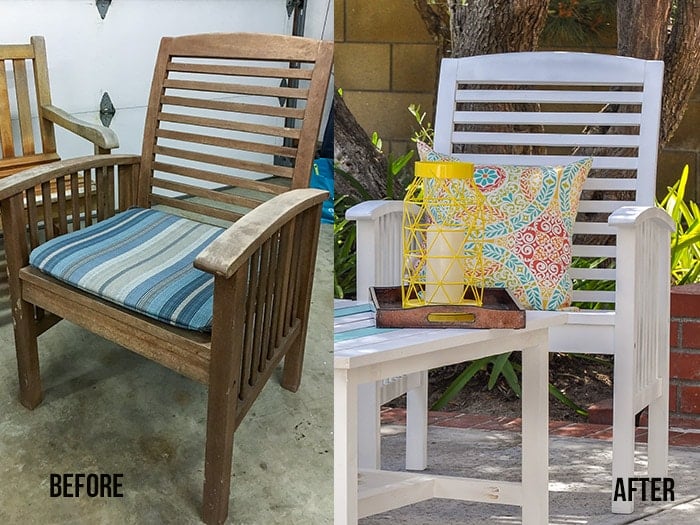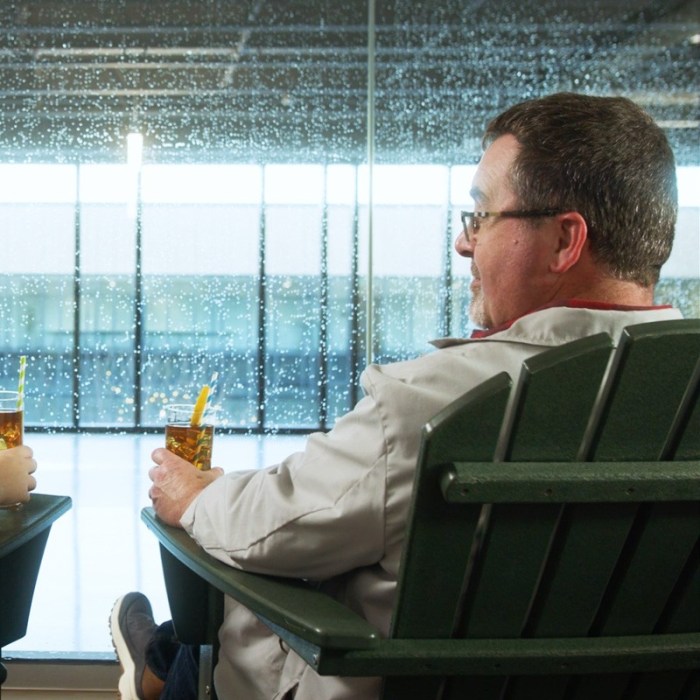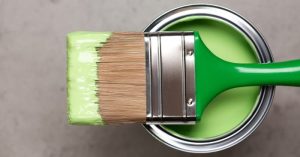
Embark on a journey into the world of outdoor furniture painting with our detailed guide on how to protect your pieces from the elements effectively. From preparation to maintenance, discover the essential tips and techniques to keep your furniture looking good as new.
Explore the nuances of selecting the right paint, applying various techniques, and maintaining the painted surfaces for long-lasting durability against changing weather conditions.
Preparation for painting outdoor furniture
Before painting outdoor furniture, it is crucial to properly prepare the surface to ensure a long-lasting finish. This includes cleaning, sanding, and selecting the right paint for outdoor use.
Cleaning the furniture
One of the first steps in preparing outdoor furniture for painting is to thoroughly clean the surface. Remove any dirt, dust, or debris by scrubbing with a mild detergent and water. Make sure to rinse off all cleaning residue and allow the furniture to dry completely before proceeding.
Sanding the surface
After cleaning, it is important to sand the furniture to create a smooth and even surface for painting. Use sandpaper to remove any existing paint, rough spots, or imperfections. This step helps the new paint adhere better and prevents peeling or chipping in the future.
Choosing the right paint
When painting outdoor furniture, it is essential to select a paint that is specifically designed for exterior use. Look for paints labeled as “exterior,” “outdoor,” or “all-weather” to ensure durability and resistance to the elements. Additionally, consider using a primer before painting to improve adhesion and longevity of the finish.
Techniques for painting outdoor furniture to resist weather
When painting outdoor furniture to withstand various weather conditions, it is essential to use the right techniques to ensure longevity and durability. Proper painting techniques can help protect the furniture from rain, sun exposure, and other elements that can cause damage over time.
Choosing the Right Paint
- Opt for high-quality outdoor paint specifically designed for exterior surfaces.
- Look for paint that is weather-resistant and formulated to withstand UV rays, moisture, and temperature changes.
- Consider using a paint with built-in sealant for added protection.
Applying Paint Evenly
- Ensure the furniture surface is clean and dry before painting to promote better adhesion.
- Use a primer to create a smooth base and improve paint adhesion for better weather resistance.
- Apply paint in thin, even coats to prevent drips and ensure thorough coverage.
- Allow each coat to dry completely before applying the next layer.
- Consider using a paint sprayer for large furniture pieces to achieve a more even finish.
Benefits of Using Primer
- Primer helps seal the surface and create a smooth base for paint application.
- It improves paint adhesion, making the paint more resistant to peeling and chipping.
- Using primer can help extend the life of the paint job and provide better protection against weather elements.
Choosing the right paint for outdoor furniture
When it comes to painting outdoor furniture, choosing the right paint is crucial to ensure longevity and resistance to various weather conditions. Different types of paint are available for outdoor use, each with its own unique characteristics and benefits.
Types of paint suitable for outdoor use
- Acrylic paint: Known for its durability and flexibility, acrylic paint is a popular choice for outdoor furniture. It dries quickly and is resistant to fading and cracking.
- Oil-based paint: Oil-based paint provides a smooth finish and excellent protection against moisture. It tends to be more durable than water-based paint.
- Latex paint: Latex paint is easy to clean up with water and offers good adhesion to various surfaces. It is also resistant to mildew and UV rays.
Durability of oil-based vs. water-based paints
Oil-based paints are known for their durability and ability to withstand harsh weather conditions. They provide a tough finish that is resistant to chipping, peeling, and fading. However, oil-based paints tend to take longer to dry and have a strong odor that may require proper ventilation during application.
On the other hand, water-based paints are easier to clean up and have a faster drying time. While they may not be as durable as oil-based paints, advancements in technology have made water-based paints more resistant to weather elements.
Importance of UV protection in outdoor paint
UV protection is crucial when choosing paint for outdoor furniture, as exposure to sunlight can cause colors to fade and surfaces to deteriorate over time. Look for paints that offer UV protection to ensure that your outdoor furniture maintains its appearance and integrity even with prolonged sun exposure.
Maintenance tips for painted outdoor furniture
Proper maintenance is essential to ensure the longevity of your painted outdoor furniture. Here are some guidelines on how to maintain and protect your outdoor furniture from harsh weather conditions.
Regular Cleaning
- Regularly clean your painted outdoor furniture with mild soap and water to remove dirt, dust, and grime.
- Use a soft brush or cloth to clean the surface gently and avoid harsh scrubbing that can damage the paint.
- Rinse thoroughly with water and allow the furniture to dry completely before using or storing it.
Protective Covers
- Consider using protective covers when your outdoor furniture is not in use to shield it from direct sunlight, rain, and other harsh weather elements.
- Choose covers made of durable, weather-resistant materials that provide adequate protection without trapping moisture.
- Make sure the covers fit your furniture properly to prevent damage from wind or pests.
Inspect and Touch Up
- Regularly inspect your painted outdoor furniture for any signs of wear, chipping, or peeling paint.
- Touch up any areas with paint that has worn off to prevent further damage and maintain the appearance of your furniture.
- Address any issues promptly to avoid more extensive repairs or repainting in the future.
Repainting Schedule
- Plan to repaint your outdoor furniture every 2-3 years, or as needed, to maintain optimal weather resistance and appearance.
- Choose high-quality, outdoor-specific paint that is designed to withstand UV rays, moisture, and temperature fluctuations.
- Follow proper painting techniques and allow sufficient drying time between coats for the best results.
Related – Painting

Outdoor furniture painting differs from indoor painting in several ways. Outdoor furniture is exposed to harsh weather conditions like sunlight, rain, and humidity, so the paint used needs to be more durable and resistant to fading, peeling, and cracking. Additionally, outdoor furniture painting requires more thorough preparation to ensure the paint adheres properly and lasts longer.Color selection plays a crucial role in outdoor furniture painting.
Light colors tend to fade faster in direct sunlight, so darker colors or UV-resistant paints are recommended for outdoor furniture. It’s also important to choose colors that complement the outdoor space and match the overall aesthetic.Different finishes can have a significant impact on outdoor furniture painting. Matte finishes are less reflective and can hide imperfections better, but they may not be as durable as gloss finishes.
Gloss finishes provide a shiny, smooth surface that is easier to clean and more resistant to moisture, but they may show imperfections more prominently. Satin finishes offer a middle ground between matte and gloss, providing some durability and a subtle shine.
Outdoor Furniture Painting Techniques
When painting outdoor furniture, consider using spray paint for a smooth, even finish. Make sure to apply multiple thin coats rather than one thick coat to prevent drips and ensure proper coverage. Allow each coat to dry completely before applying the next one. Finish with a clear sealant to protect the paint from the elements and extend its lifespan.
Related
Performing Arts
Performing Arts
Painting outdoor furniture can be considered a form of performance art due to the creative process involved in transforming a plain piece of furniture into a personalized work of art. Just like a performer on stage, the painter puts their skills and creativity to work to bring the furniture to life with color and design.
Creative Aspects in Painting Outdoor Furniture
- Color selection: Choosing the right colors can greatly impact the overall look of the furniture. It allows for self-expression and creativity.
- Design and patterns: Incorporating unique designs and patterns can add a touch of individuality to the furniture, making it stand out in an outdoor space.
- Texture and finishes: Experimenting with different textures and finishes can create visual interest and depth, enhancing the artistic appeal of the furniture.
Reflection of Personal Expression
- Personal style: Painting outdoor furniture provides a platform for individuals to showcase their personal style and preferences through colors and designs.
- Emotional connection: The process of painting can evoke emotions and memories, making the furniture a reflection of the painter’s inner thoughts and feelings.
- Creative outlet: For many, painting outdoor furniture serves as a creative outlet to express themselves and unleash their artistic side in a practical way.
Related – Philosophy

When it comes to the maintenance of outdoor furniture through painting, there is a deep connection to philosophy. The philosophy behind painting outdoor furniture lies in the balance between aesthetics and functionality. This balance reflects a deeper understanding of the purpose of outdoor furniture and the role it plays in our lives. Additionally, philosophical perspectives on the longevity of painted outdoor furniture shed light on our relationship with material possessions and the value we place on preserving them.
Exploring the Connection between Aesthetics and Functionality
Painting outdoor furniture is not just about adding color or protecting it from the elements. It is also about enhancing its aesthetic appeal while ensuring that it remains functional and practical. The philosophy behind this process lies in the belief that beauty and utility should go hand in hand. By painting outdoor furniture, we are not only preserving its structural integrity but also elevating its visual appeal, creating a harmonious balance between form and function.
Philosophical Perspectives on Longevity
- Painting outdoor furniture can be seen as a metaphor for the passage of time and the impermanence of material objects. It reminds us of the importance of taking care of our belongings and preserving them for future generations.
- From a philosophical standpoint, the act of painting outdoor furniture is a way of asserting our control over our environment and leaving a lasting impact on the world around us. It reflects our desire to create beauty and order in a chaotic and ever-changing world.
- Furthermore, the longevity of painted outdoor furniture can be viewed as a symbol of our commitment to sustainability and responsible consumption. By extending the lifespan of our furniture through painting, we are reducing waste and minimizing our environmental footprint.
Related – Photography
Photography can be a powerful tool to document the process of painting outdoor furniture. Not only does it provide a visual record of the transformation, but it can also capture the intricate details and textures of the painted furniture. In addition, photography allows you to showcase your work and share it with others, whether for personal reference or to inspire others to take on similar projects.
Using Photography to Capture Details
- When photographing painted outdoor furniture, make sure to focus on the small details that make your piece unique. This could include brush strokes, wood grain, or any distressing techniques you may have used.
- Utilize close-up shots to highlight these details and create visual interest in your photos.
- Experiment with different angles and perspectives to find the best way to showcase the textures and colors of the paint.
The Role of Lighting in Photography
- Lighting plays a crucial role in photographing painted outdoor furniture. Natural light is often the best option as it can bring out the true colors of the paint and enhance the textures of the furniture.
- Avoid harsh overhead lighting that can create shadows and wash out the colors. Instead, opt for soft, diffused light that highlights the details without causing distractions.
- Consider the time of day when taking photos. Early morning or late afternoon light can create a warm, inviting glow that enhances the beauty of your painted furniture.
Related – Short Fiction
In a quaint little town nestled between the mountains, there lived a woman named Lily who had a special talent for painting outdoor furniture. Her vibrant personality matched the colorful strokes she applied to each piece, transforming ordinary chairs and tables into works of art that could withstand any weather condition.Lily’s connection to her painted furniture ran deep. Each stroke of the brush represented a moment of resilience and transformation in her own life.
The bright yellows and blues she chose for a chair reflected the sunny days that lifted her spirits during dark times, while the sturdy coat of paint symbolized her unwavering strength in the face of adversity.
The Tale of the Weather-Proof Bench
Lily’s most prized creation was a weather-proof bench that sat in her garden, overlooking a breathtaking view of the valley below. This bench had seen it all – scorching summer heat, torrential rains, and even the occasional snowfall. But through it all, the colors remained vibrant, and the wood remained strong, a testament to Lily’s dedication to her craft.
- As Lily painted each slat of the bench, she poured her heart and soul into every stroke, infusing it with a sense of resilience that seemed to seep into the very fibers of the wood.
- When a fierce storm threatened to wash away the bench’s colors, Lily stood firm, repainting it with even more vibrant hues, determined to protect her creation from the elements.
- Over the years, the bench became a symbol of transformation for Lily, a reminder that even in the harshest of conditions, beauty and strength could endure.
Lily’s story spread throughout the town, inspiring others to find their own ways of expressing resilience and transformation. And as the weather changed and the seasons passed, the bench remained a beacon of hope, standing tall and proud in Lily’s garden, a testament to the power of art and the human spirit.
Related
Visual Graphic Arts
Visual Graphic Arts
When it comes to designing painted outdoor furniture, the principles of visual graphic arts can be incredibly helpful in creating stunning and durable pieces. By incorporating elements like patterns, textures, and colors commonly used in graphic design, you can elevate the aesthetics of your outdoor furniture and ensure they stand up to the elements.
Application of Graphic Design Elements
- Patterns: Utilizing bold and eye-catching patterns on outdoor furniture can add visual interest and personality. Whether it’s geometric shapes, floral motifs, or abstract designs, patterns can make a statement and help furniture pieces stand out in an outdoor setting.
- Textures: Incorporating different textures, such as smooth finishes, rough surfaces, or even tactile elements like woven materials, can create depth and dimension in painted outdoor furniture. Textures not only enhance the visual appeal but also add a tactile experience for users.
- Colors: Choosing the right color palette is crucial in graphic design, and the same applies to painting outdoor furniture. Vibrant hues can bring energy and vibrancy to a space, while neutral tones offer a sense of calm and sophistication. Experiment with color combinations to find the perfect balance for your outdoor furniture.
In conclusion, mastering the art of painting outdoor furniture to resist weather is not just about aesthetics but also about ensuring longevity and protection. With the right knowledge and care, your outdoor pieces can withstand the test of time and weather beautifully.
Answers to Common Questions
How often should I repaint my outdoor furniture for optimal weather resistance?
It is recommended to repaint your outdoor furniture every 2-3 years to maintain its weather resistance.
What types of paint provide the best UV protection for outdoor furniture?
Acrylic-based paints with UV inhibitors are known to offer excellent protection against UV rays for outdoor furniture.
Is primer necessary before painting outdoor furniture?
Using a primer before painting outdoor furniture helps in better adhesion, durability, and weather resistance of the paint.







